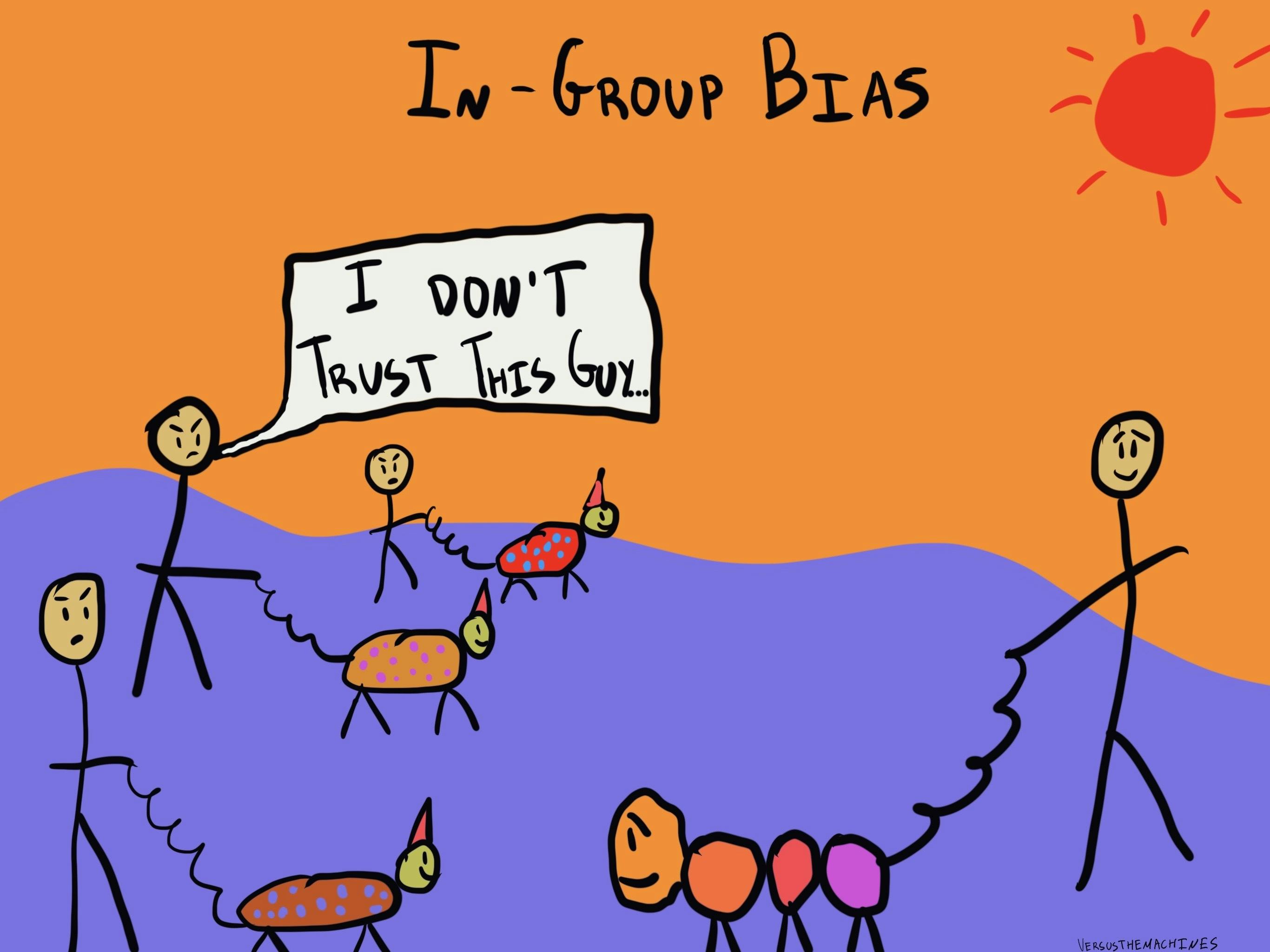Why do we treat our in-group better than we do our out-group?
In-group Bias
, explained.What is In-Group Bias?
In-group bias (also known as in-group favoritism) is the tendency of people to give preferential treatment to others who belong to the same group as they do. This bias can show up even when people are put into groups randomly, making group membership effectively meaningless.

Where this bias occurs
Have you ever felt an instant connection with someone just because you’re part of the same group? Let’s say you’re a football fan and you root for the New England Patriots. At work, you have a couple of coworkers who are also into football: John, who is also a Patriots fan, and Julie, who supports the Philadelphia Eagles. Even though you get along with both of your coworkers equally well, you feel a closer connection to John. You find yourself chatting with him more often, backing him up in group meetings, and maybe even trusting his opinion on work projects a little more. This doesn’t necessarily mean that you dislike Julie, but rather that you favor John because the two of you share a social group.
Even small, seemingly insignificant group labels can influence how we interact with the people around us. This pattern, known as in-group bias, is well-documented across a wide range of social contexts.19 Whether it’s something as arbitrary as a favorite sports team or something more deep-rooted like our ethnic or cultural background, we often act more prosocially toward members of our own group than toward those outside our group—whether we notice it or not.














